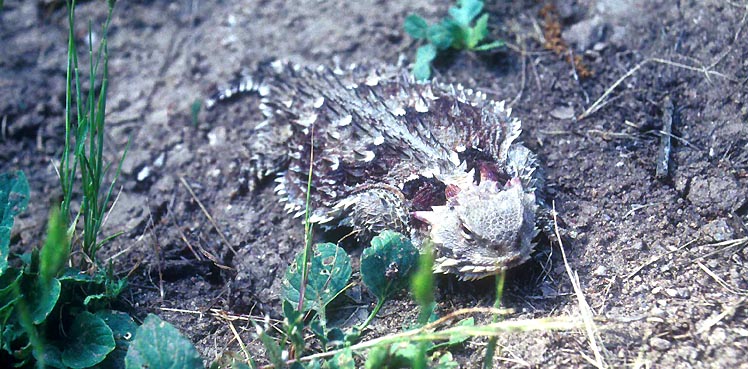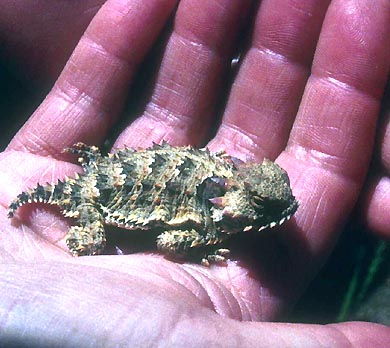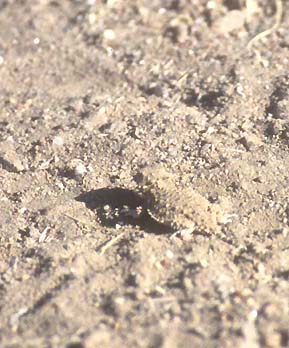 |
| There really is nothing else quite as cool as a horned lizard. They
look prehistoric and yet oh sooo cute. When I was just a young lad, I was
given one as a pet. It lived in a terrarium and I caught ants for it to
eat. My best recollection is that I had it for almost two years.
As I grew up in Lake County in northern California, I presume that my pet lizard was actually a Coast Horned Lizard Phrynosoma coronatum (above). This is the widespread California species west of the deserts and the Sierran-Cascade mountains. Finding them in the wild, though, is difficult. Despite living and birding in their habitat throughout my life, I've only encountered a handful of them. The "hand-full" below (held by Rita Carratello) is one of three in adult patterns found during Breeding Bird Atlasing in a remote corner of the Santa Lucia Mountains. Otherwise, I've only seen solitary lizards, and they rarely move. They don't like to be picked up (once one squirted blood from its eyes in defense). According to Stebbins (2003) this "blood comes from a pore in the eyelid region" and can spurt "several feet. It has a repellent effect on coyotes, foxes, and perhaps other predators." This species of horned lizard, and most others, feed heavily on ants. In autumn, I once found a juvenile Coast Horned Lizard high up in montane chaparral (below right). It was only the size of a U.S. nickel and was almost invisible against the dirt patch it was crossing. It lacked the adult's colorful patterns but did have a banded tail. |


